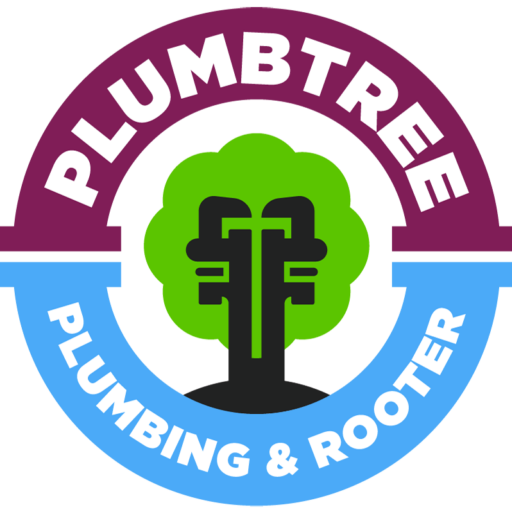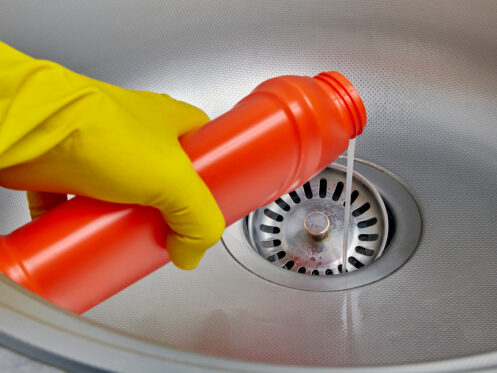Sinks almost always have water in them, which can cause rust to form on the edges and faucets. Rust is not just unsightly, it can lead to structural damage. Fortunately, there are several steps you can take to prevent and reduce rust around your sink.
Blog Post Summary
- 1. Use a Rust Remover
- 2. Use a Pumice Stone
- 3. Use Lemon Juice and Salt
- 4. Use White Vinegar
- 5. Use Baking Soda
- 6. Use Hydrochloric Acid
- 7. Use Phosphoric Acid
Below are a few tips on how to reduce rust around your sink. Keep in mind that these cleaning tips don’t address the source of the rust. If you don’t identify and fix the source of the rust, you may need to clean the rust spots multiple times.
1. Use a Rust Remover
If you’ve already spotted rust around your sink, using a rust remover to treat the affected area is one option. Rust removers contain chemical compounds that help dissolve surface rust on metal or rust stains on porcelain. Be sure to follow the instructions on the packaging carefully and wear protective clothing such as gloves, long sleeves, and eye protection.
When choosing a rust remover, find one specifically designed for the kind of sink that you have. Be aware that some products may also require scrubbing or sanding to remove the rust.
Once the rust has been removed, protecting the area from further corrosion is important. Use a metal sealant or paint on the area that was corroded to provide added protection against future rust. Apply the sealant or paint according to the instructions on the packaging and let it completely dry before using your sink again.
2. Use a Pumice Stone
If you have stubborn rust around your sink, gently scrub it with a pumice stone. Start by wetting the area with warm water and dipping the pumice stone. Gently scrub the area in a circular motion to help loosen any rusty particles, then rinse the area with clean water. Repeat this process as needed until the rust is gone.
Since pumice stone is a natural material, it won’t damage the sink like harsh chemical cleaners might. Pumice stones are also relatively inexpensive and can be found at most hardware stores. This is the perfect option if you’re looking for an eco-friendly way to get rid of rust.
3. Use Lemon Juice and Salt
Lemon juice and salt are a great way to reduce rust around your sink. Cut a lemon in half and squeeze the juice into a bowl. Once you have enough juice, mix a tablespoon of salt until it forms a paste. Apply this paste to the rusty parts of the sink and leave it on for 15-20 minutes.
After that, rinse off the paste with warm water and scrub the affected area gently with a soft-bristled brush. This should help to loosen any rust buildup and turn it into a more manageable paste.
It is important to ensure you rinse off all the lemon juice and salt thoroughly, as leaving any residue behind can cause corrosion. Once done, make sure to dry the sink completely to prevent any further rusting.
Try repeating this process every few months to keep the sink clean and rust-free for the best results.
4. Use White Vinegar
White vinegar is one of the most effective and inexpensive ways to reduce rust around your sink. White vinegar is a natural acid that can dissolve rust and help prevent future buildup.
To use white vinegar, pour it over the rust-affected area and let it sit for a few minutes. Afterward, use a scrub brush to help loosen any residual rust buildup, and then rinse with water before drying. Regular application can help reduce or eliminate rust around your sink.
However, when using this method, be sure to wear protective clothing and safety glasses to protect your eyes and skin from the vinegar.
5. Use Baking Soda
Baking soda is a great natural rust remover. Baking soda contains natural alkaline properties, making it perfect for removing rust around sinks. To use baking soda to remove rust, simply paste baking soda and water and apply it to the rusted area. Allow the paste to sit for 15 minutes, then use a damp cloth or sponge and scrub away the rust.
Mix vinegar and baking soda to create an even stronger rust-removing paste. Mixing 1/4 cup of baking soda, 1/2 cup of white vinegar, and 1/2 cup of water, you can make a powerful rust-removing paste.
6. Use Hydrochloric Acid
Using hydrochloric acid is one of the most effective ways to remove rust from around your sink. Hydrochloric acid, or muriatic acid, is a strong corrosive acid that reacts well with rust.
When using hydrochloric acid to remove rust around your sink, you will need to mix the acid with water. The amount of hydrochloric acid in water will vary depending on how much rust you try removing.
Still, using a 1:9 ratio of hydrochloric acid to water is generally recommended. Once the correct amount of hydrochloric acid is added to the water, you can use a brush or cloth to apply it directly to the rust.
You should use a pH test strip to ensure that you are using the correct amount of hydrochloric acid. The ideal pH for removing rust is between 1 and 2.
Remember that hydrochloric acid can damage surfaces, so you should be sure to test it on a small area before using it on your sink. Additionally, you should wear protective gear, such as gloves and eyewear, when handling the acid. Finally, be sure to dispose of any acid-water mixtures properly.
7. Use Phosphoric Acid
Phosphoric acid can be a good solution to reduce rust around your sink. It is a mild acid that converts the iron molecules in the rust into a stable, water-soluble form. This means it can be easily wiped away with a damp cloth or sponge, leaving your sink looking as good as new.
The best way to use phosphoric acid is to mix it with water and let it sit on the affected area for a few minutes. This will help the acid seep into small crevices and dissolve the rust. After a few minutes, use a damp cloth or sponge to scrub the area and rinse off any remaining residue.
Remember that phosphoric acid can be hazardous, so always wear gloves and take precautions. It is also important to avoid contact with your skin or eyes and keep it away from children. If the acid gets on your skin, rinse it off immediately with plenty of water and seek medical attention if necessary.
Get Rust Removal Services
Rust can be an eyesore and hard to eliminate. By following these tips, you should be able to eliminate rust from around your sink and keep it looking clean for a long time. With a little elbow grease and the right products, you can get rid of rust around your sink and restore it to its former glory.
You can also reach out to a professional plumbing company like Plumbtree Plumbing & Rooter if you need additional help with rust removal. We have the experience and equipment to help make your sink look new. We can also help you with drain cleaning, drain repair, garbage disposal, hydro jetting, leak detection, sewer services, rooter services, and sump pump installation.
Contact Plumbtree Plumbing & Rooter today, and let us help you with your plumbing needs in San Jose!

